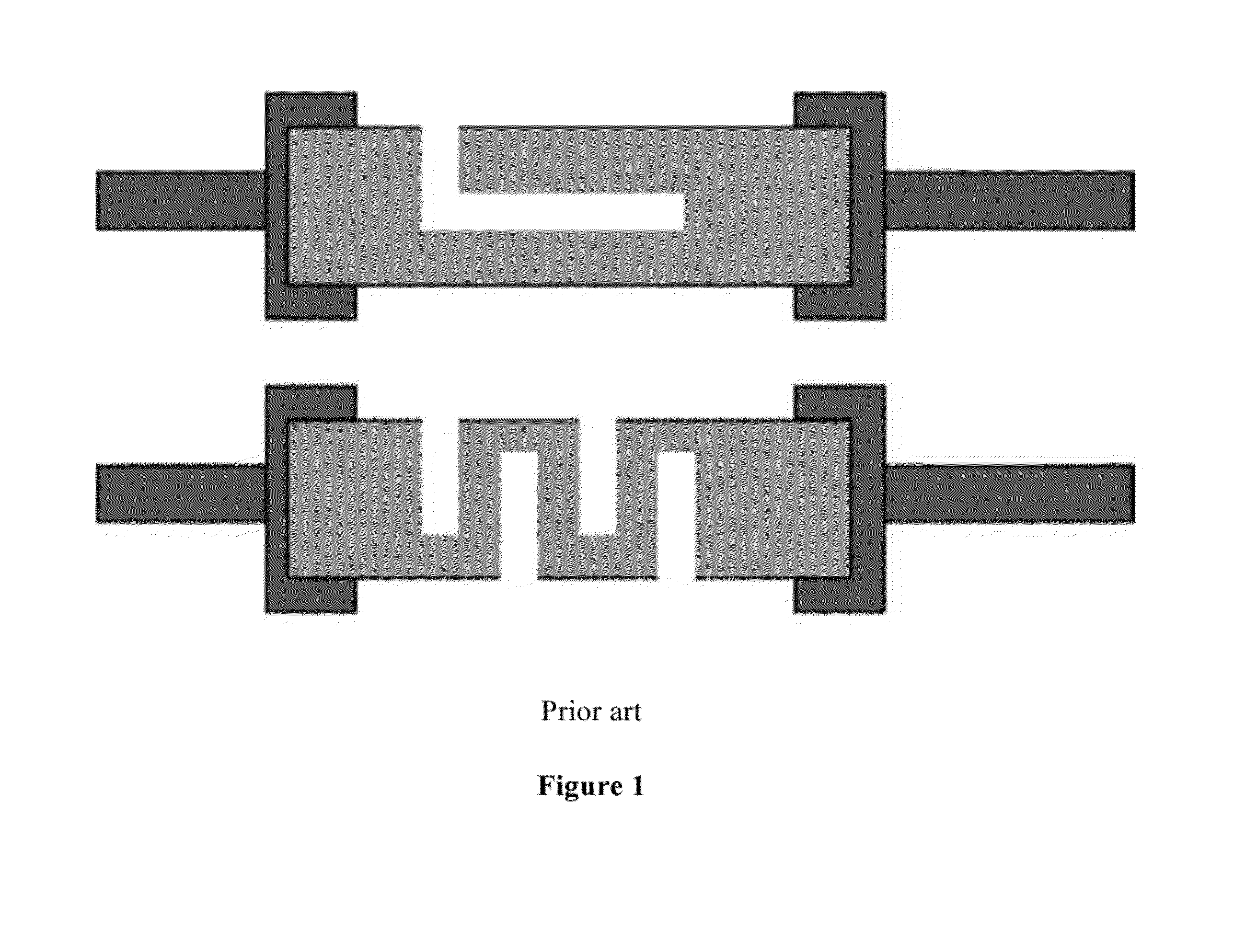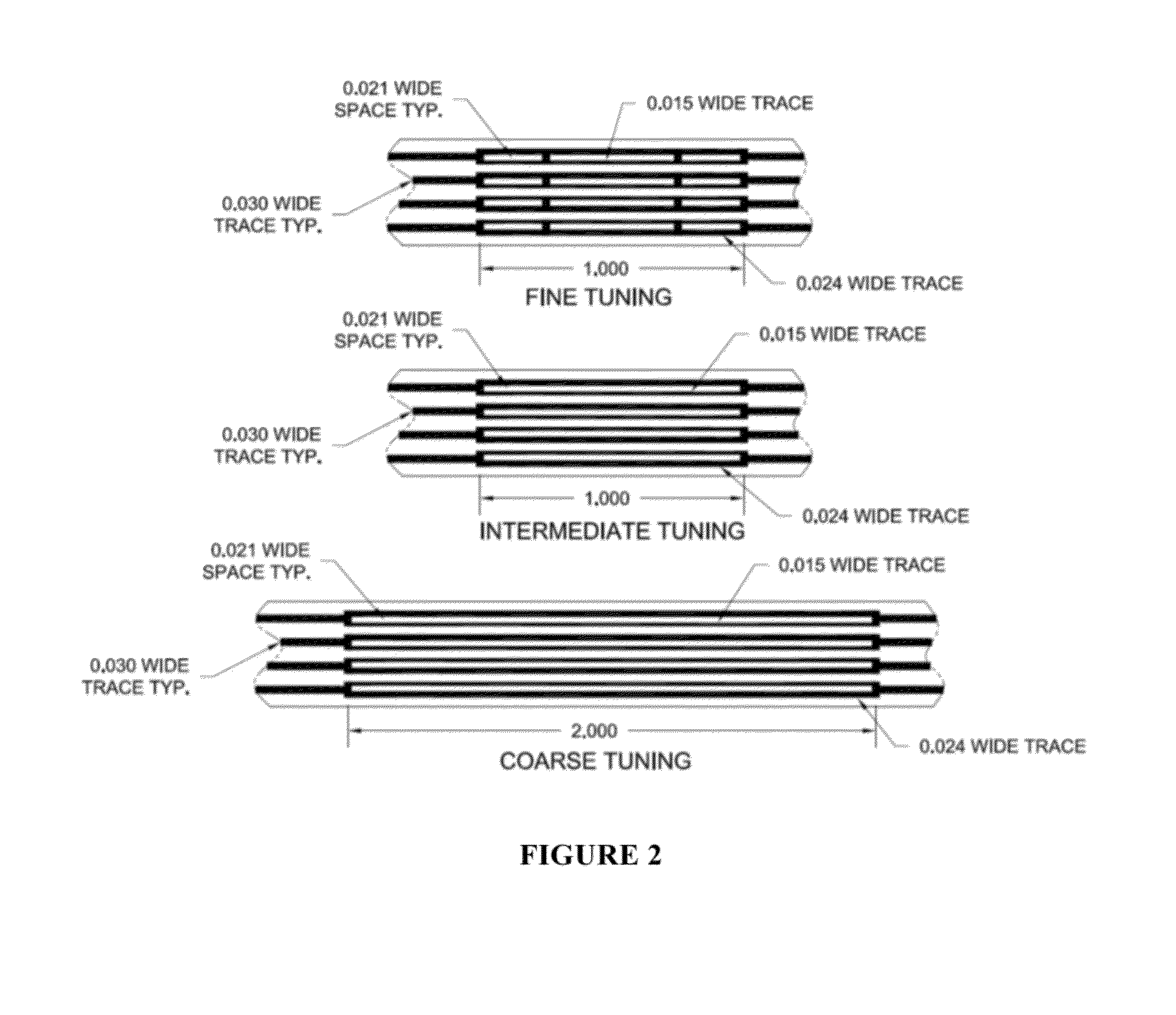Tunable resistance conductive ink circuit
a technology of conductive ink and resistance, applied in the direction of insulated conductors, flat/ribbon cables, cables, etc., can solve the problems of cable assemblies which contain too much variation, corrupt the mri image, and the resistance of cables is increased. , to achieve the effect of increasing the resistance of the cabl
- Summary
- Abstract
- Description
- Claims
- Application Information
AI Technical Summary
Benefits of technology
Problems solved by technology
Method used
Image
Examples
Embodiment Construction
[0043]This invention solves the previously stated problems by adding multiple “tuning” sections made up of one or more closed conductive loops with multiple conductive paths on each conductor which can be easily and inexpensively severed to adjust the individual conductor resistances after the application of the conductive ink to the substrate. By varying the length of the tuning sections by design, it is possible to provide different degrees of adjustment from coarse adjustment to fine adjustment. See FIG. 2 for some embodiments of the present invention.
[0044]One application of the method and system of high-resistance, multiple-conductor flat cables of the present invention is for use in monitoring a patient while the patient is in or near a MRI machine: The range of resistance needed to overcome inductive interference caused by the MRI machine is from about 50 kOhms to about 70 kOhms for a 6 foot cable. Generally, the resistance is from about 8 kOhms to about 12 kOhms per foot of ...
PUM
| Property | Measurement | Unit |
|---|---|---|
| length | aaaaa | aaaaa |
| lengths | aaaaa | aaaaa |
| thick | aaaaa | aaaaa |
Abstract
Description
Claims
Application Information
 Login to View More
Login to View More - R&D
- Intellectual Property
- Life Sciences
- Materials
- Tech Scout
- Unparalleled Data Quality
- Higher Quality Content
- 60% Fewer Hallucinations
Browse by: Latest US Patents, China's latest patents, Technical Efficacy Thesaurus, Application Domain, Technology Topic, Popular Technical Reports.
© 2025 PatSnap. All rights reserved.Legal|Privacy policy|Modern Slavery Act Transparency Statement|Sitemap|About US| Contact US: help@patsnap.com



